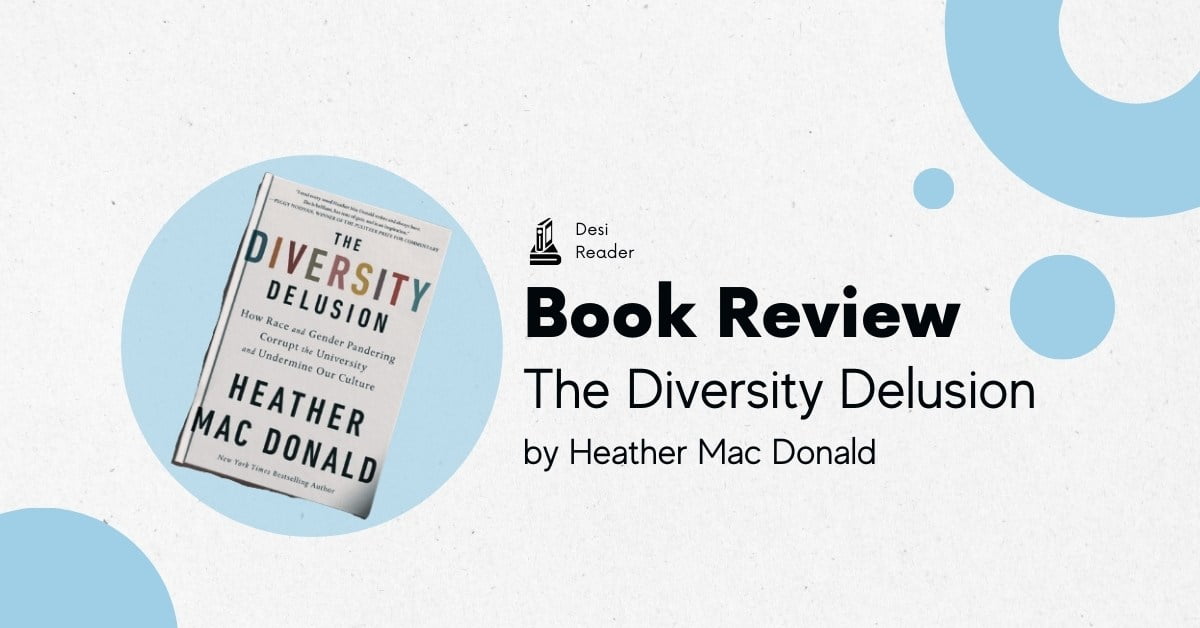The Diversity Delusion: How Race and Gender Pandering Corrupt the University and Undermine Our Culture by Heather MacDonald – book review
Title: The Diversity Delusion: How Race and Gender Pandering Corrupt the University and Undermine Our Culture
Author: Heather Macdonald
Publisher: St. Martin’s Press
Publication Date: September 2018

Introduction:
In “The Diversity Delusion,” Heather Macdonald presents a comprehensive and incisive analysis of the impact of diversity initiatives within academia and their far-reaching societal consequences. Through meticulous research and thoughtful examination, Macdonald delves into the effects of diversity agendas on multiple facets of university life, including but not limited to admissions policies and campus culture. In our comprehensive review, we will meticulously evaluate the strengths and weaknesses of Macdonald’s assertions, scrutinise the soundness of her arguments, and explore the broader implications of her astute analysis.
In this review article, let’s focus on the strengths and weaknesses of the book. It will help readers understand, significantly precisely, the highs and lows of the book and the writer’s attempt.
Strengths:
1. Thorough Analysis: One of the book’s primary strengths lies in its thorough analysis of academic diversity initiatives. Macdonald leaves no stone unturned as she examines the multifaceted ways in which diversity agendas have reshaped higher education. From implementing affirmative action policies to increasing diversity training programs, she provides a comprehensive overview of how diversity is promoted and enforced in universities.
2. Empirical Evidence: Macdonald’s arguments are bolstered by a wealth of empirical evidence, ranging from statistical data to case studies. By grounding her analysis in concrete examples and verifiable facts, she strengthens the credibility of her claims and invites readers to evaluate the evidence for themselves critically. This evidence-based approach lends weight to Macdonald’s assertions and distinguishes her work from mere opinion or speculation.
3. Defense of Academic Freedom: A central theme of “The Diversity Delusion” is Macdonald’s defence of academic freedom and intellectual diversity. She argues persuasively that the relentless pursuit of diversity has come at the expense of open debate and free inquiry within academia. By highlighting instances of censorship, ideological conformity, and the marginalisation of dissenting viewpoints, Macdonald makes a compelling case for preserving academic freedom as a cornerstone of democratic society.
4. Thought-Provoking Insights: Throughout the book, Macdonald offers thought-provoking insights into the unintended consequences of diversity initiatives. She raises important questions about the trade-offs between diversity and academic excellence, the potential for groupthink and ideological conformity, and the role of identity politics in shaping educational priorities. These insights challenge readers to reconsider their assumptions and critically reflect on the underlying tensions between diversity and meritocracy.
Weaknesses:
1. Lack of Nuance: While Macdonald’s analysis is comprehensive, it occasionally lacks nuance in treating complex issues. She tends to portray diversity initiatives uniformly negatively, overlooking the potential benefits they can bring to educational equity and social justice. By framing diversity as inherently corrosive to academic standards and intellectual freedom, Macdonald oversimplifies the nuanced debates surrounding diversity and inclusion in higher education.
2. Ideological Bias: Some critics have accused Macdonald of ideological bias, arguing that her conservative perspective colours her analysis of diversity initiatives. While it is true that Macdonald is critical of identity politics and progressive social movements, her arguments are not devoid of merit simply because of her ideological leanings. Nevertheless, readers should approach her analysis critically and consider alternative viewpoints to understand the issues at hand better.
3. Limited Engagement with Intersectionality: “The Diversity Delusion” focuses primarily on race and gender diversity, overlooking the intersecting dynamics of class, sexuality, and other dimensions of identity. This limited engagement with intersectionality may undermine the book’s effectiveness in addressing the full complexity of diversity issues within academia. A more inclusive approach that considers marginalised groups’ intersecting experiences would enhance Macdonald’s analysis’s richness and broaden its relevance to a broader audience.
Comparison with Other Books:
– Richard Sander and Stuart Taylor Jr.’s “Mismatch: How Affirmative Action Hurts Students It’s Intended to Help, and Why Universities Won’t Admit It” offers a similar critique of affirmative action policies in higher education, focusing on their detrimental effects on academic performance and campus climate.
– Michael J. Sandel’s “The Tyranny of Merit: What’s Become of the Common Good?” explores the role of meritocracy in perpetuating social inequalities and advocates for a more inclusive approach to societal advancement.
Conclusion:
In “The Diversity Delusion,” Heather Macdonald compellingly critiques diversity initiatives within academia, highlighting their potential pitfalls and unintended consequences. While the book offers valuable insights into the tensions between diversity and academic freedom, its analysis would benefit from a more nuanced treatment of complex issues and a broader engagement with intersectionality. Nevertheless, “The Diversity Delusion” is a thought-provoking work that challenges readers to critically examine the role of diversity in shaping contemporary higher education and society at large.
